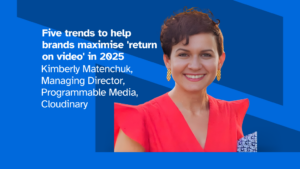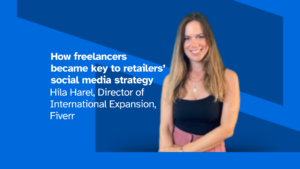By: Mattias Spetz, President Global, Channel Factory
There is an undercurrent of talk across our industry and it’s to do with social good and a higher purpose. Aside from the death of the cookie, there are fewer buzz words stirring up such a controversial divide in marketing right now than ‘purpose-built brands’.
With the continued COVID-19 pandemic, protests for racial justice, and hugely influential political elections globally, there has been a social shift in the world that has made brands start to re-evaluate their decisions on brand safety and content monetisation.
From Toyota and UPS to Danone and Evian, today’s leading global brands are aggressively trying to recalibrate their business with social purpose at its heart. Is this a much-needed step forward for these market leading brands to lead by example, or are they merely navel gazing and chasing the money?
Arguably it makes sense for global brands to lead the charge for social good – but are they practicing what they preach? Do these brands really care or are they just building castles and fortunes in the sky?
The Missing Link is Customer Sentiment
Following the demise of third-party cookies combined with hyper-aware consumers on data privacy rights, it is unsurprising that businesses are having to reevaluate their marketing strategies. But, more often than not, a key step in the process is missed: finding out what customers want in the first place! Matching the content of your campaign with audience profiling – otherwise known as contextual advertising – harks back to a simpler time.
But it still works.
Backing these kinds of ‘softer’ initiatives up with tactical delivery based on hard data is the only way to get leadership buy-in. For example, Channel Factory conducted a recent survey with GroupM on the value of context and the impact contextual alignment has on different verticals. The results were staggering, across all verticals, there was a 17% lift in ROI (sales) recognised by the agency for their clients that used contextual targeting on YouTube.
Be Conscious of Being Conscious
There are many old wives tales around this; ‘what goes around comes around’ or ‘treat others as you wish to be treated yourself’ and it may sound out of place in a cut throat business environment, especially in the current economic landscape – but quite the opposite is true.
Channel Factory’s own research found that 69% of consumers would prefer to buy from brands committed to socially conscious causes and this means that successful brands will need to go above and beyond to add value and incorporate social purpose into their business in the right way.
Kantar’s 2020 report supports this, finding that 54% of consumers now expect brands to take an active role in social conversations about issues like #MeToo and racial injustices, with consumers also demanding meaningful action rather than empty solidarity. A survey conducted after George Floyd’s killing found that more than 60% of Generation Z Americans thought that the way corporations reacted to the BLM movement would permanently affect their future purchasing patterns.
Brands need to ensure their stake in the ground comes from a passion and is not purely a marketing exercise. Take BrewDog, for example, who have taken a stance in support of environmental issues by becoming carbon-negative and in buying land to create its ‘Brewdog Forest’ or Ben & Jerry’s ice cream, who have a long-standing history on being vocal on a range of social topics including the ‘Black Lives Matter’ movement and LGBTQ+ issues more recently.
Company ethos is especially pertinent in these times of data privacy and sensitivity – one school of thought is that over personalised ads actually overstep the mark – making consumers feel like they are under surveillance. Whilst this may be a result of the naivety of cookies and privacy laws on the part of the consumer, finding the balance between aggressive targeting and customer satisfaction is key. And surely receiving personalised ads from a company that shares your personal beliefs goes some way to reassure a consumer to the positivity of their intentions?
Be Inclusive
Even brands that do have a ‘do good’ focus and communicate it effectively are still missing a trick. In order to engage consumers advertisers still need to decide where and what content they are associated with. And this is not a tick box exercise – brands that actively include specific content as an integral part of their business strategy will see more success compared to those that chose blanket exclusions of content to advertise against.
For example, Channel Factory’s research has found that 93% of LGBTQ+ creators on YouTube are blocked by advertisers – meaning only 7% of LGBTQ+ content is deemed safe to advertise against. This is shocking and hugely discriminatory for these communities, and while the analysis focused on the LGBTQ+ community, Black, API, and Hispanic creators are impacted via the discriminatory blocking of positive or neutral keywords too.
Traditionally, advertising ‘safe’ lists have not included content from LGBTQ+ and many other minority creators. Why? Perhaps for the fear of being placed against something inappropriate or offensive – but times have changed. Don’t exclude those creators, exclude the inappropriate content. There are tools that can do this! Why? Because it provides credibility to your organisation and it’s the right thing to do.
It seems clear that to have truly successful advertising campaigns, a balanced approach is needed. Mastering the traditional methods of audience research and contextual targeting, backing these up with the latest tools, tech and tactical delivery and coupled with overarching business strategy that promotes positivity, trust and a higher purpose is the best recipe for the simple raison d’etre of getting a customer to buy your product. It may sound simple, because it is – it all comes down to authenticity and being true to your business self. We at Channel Factory call this ‘conscious advertising’ but in the future, we hope to call it the standard. Who’s with us?









